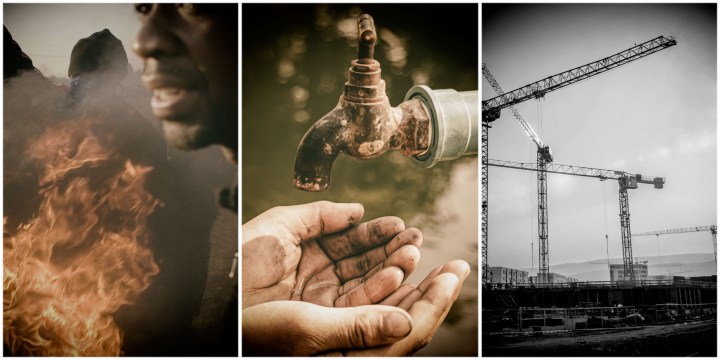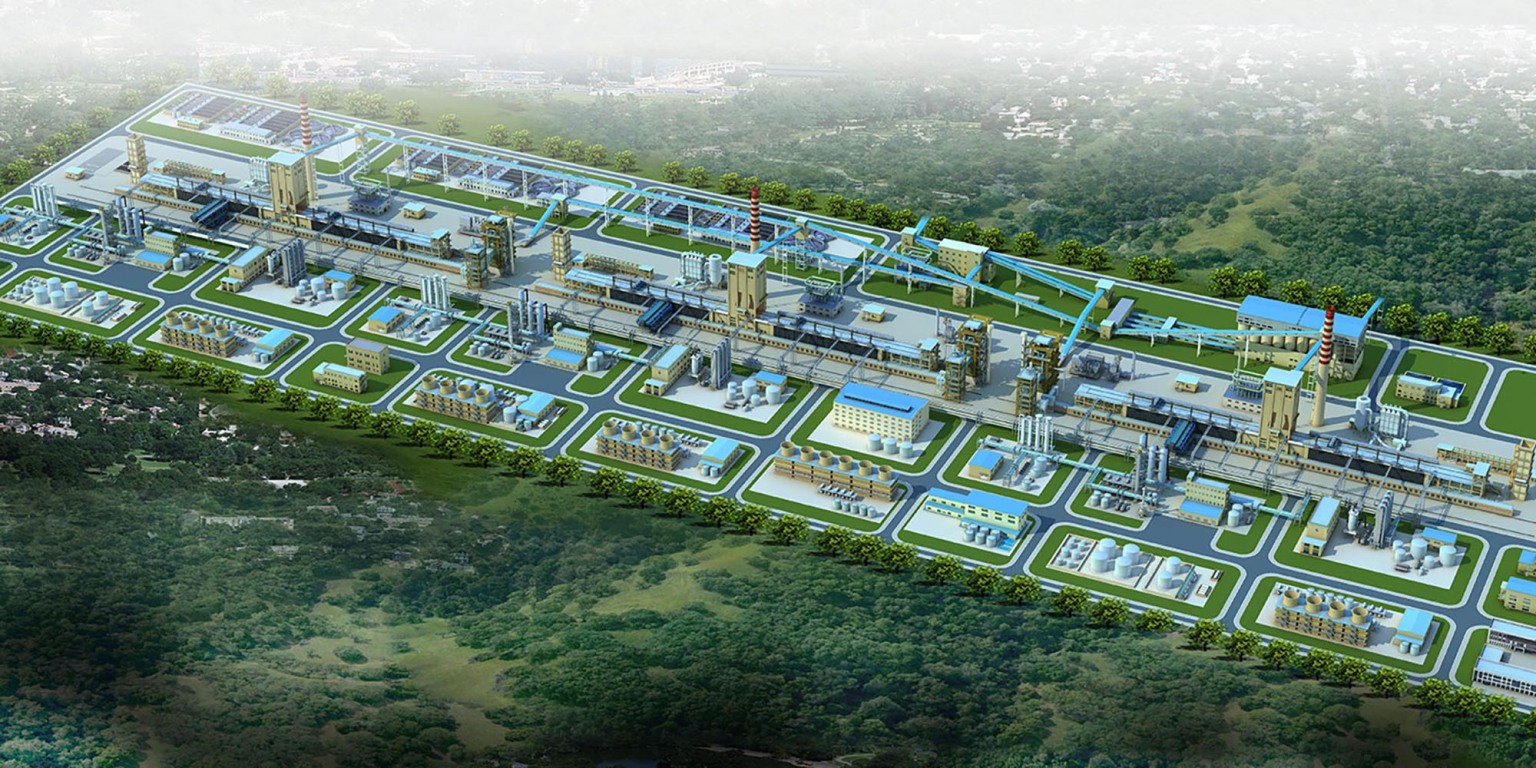AMABHUNGANE
Musina-Makhado Special Economic Zone: The desperate battle to defuse Limpopo’s climate bomb

Limpopo’s proposed mega-industrial complex, the Musina-Makhado Special Economic Zone, is being challenged in court over its environmental authorisation, which overlooks the drastic toll it would have on the region’s water supply – and biodiversity.
Limpopo’s plans for a giant industrial development could cause an ecological disaster in a province where water shortages are already a regular occurrence for rural communities.
The environmental authorisation of the proposed Musina-Makhado Special Economic Zone (MMSEZ) – based on a proposed investment by a cluster of Chinese industrial conglomerates – is being challenged in the Polokwane High Court by the Herd Nature Reserve, Living Limpopo and the Centre for Applied Legal Studies (Cals).
The organisations filed a review application on 13 January asking the court to scrap the environmental authorisation granted to the project by the Limpopo Department of Economic Development, Environment and Tourism (Ledet). Instead, they want the decision referred upwards to the national Department of Forestry, Fisheries and the Environment (DFFE).
The development has been dogged by controversy.
(amaBhungane dubbed the project “Limpopo’s dirty great white elephant” in a four-part #EarthCrimes investigation. Read Part 1, Part 2, Part 3 and Part 4 here.)
Given its chosen location in an area with huge amounts of biodiversity, coupled with limited water, civil society organisations have long been ringing alarm bells about the possible toll the project could have on the region.
In 2021, when China’s president Xi Jinping announced that China would no longer fund the construction of coal-fired power plants in other countries because of climate damage, it seemed to torpedo plans for Limpopo’s giant metallurgical complex with its own dedicated coal power station.
Instead, on 23 February 2022, Ledet approved the environmental authorisation, keeping this Frankenproject alive.
Dry taps have already become such a mainstay for communities that Musina saw violent protests erupting in May 2022 as residents “demanded a permanent solution to the water crisis”.
The MMSEZ, the court application warns, will make things dramatically worse.

An illustration of what the Musina-Makhado Special Economic Zone could look like. (Image: earthlife.org.za)
Getting to know Limpopo’s dirty, great white elephant
A Special Economic Zone (SEZ) is an area designated by the Department of Trade, Industry and Competition to promote economic growth by attracting local and foreign investments through special tax rules, export incentives and other benefits.
The Musina-Makhado development is one such zone — although its development has been accompanied by dodgy approvals, questionable characters and other red flags.
The major portion of the project is slated for an energy and metallurgical hub. Included in the proposals are a coal-washing plant capable of processing 20 million tonnes a year, a dedicated coal power station of at least 1,320MW, a coking coal plant, a ferrochrome plant, a ferromanganese plant, a stainless steel plant, a lime plant and a titanium dioxide plant.
The power source for all these heavy industries: coal.
Along with all that coal comes a huge demand for water. Approximately 431 litres of water are used per tonne of coal mined, and coal power generation consumes another 3,184 litres per MWh, according to estimates in a 2018 Life After Coal report.
If it goes ahead as initially planned, the development would drain an estimated 123 billion litres of water per year – enough to fill up almost 50,000 Olympic-sized swimming pools.
In South Africa, average domestic water use is about 86,505 litres per person per year, according to a 2019 report by the Department of Water and Sanitation. In other words, the industrial development would use the same amount of water as 1.42 million people (slightly more than the population of Nelson Mandela Bay).
“The MMSEZ is a … noxious industrial development that is extremely water-intensive” and will “seriously jeopardise the water security of the region”, the project’s opponents warn in their court papers.
Even the project’s own experts have warned the plan is likely to have a devastating impact on the nearby communities and the region as a whole.
An environmental scoping report conducted by Delta Built Environment Consultants warned: “A critical risk factor … is the long-term availability of water as the region is severely water strained.”
Added to this, the project’s heavy reliance on fossil fuels would eat up a huge chunk of South Africa’s scarce carbon budget.
The NGO applicants argue: “Emissions released by the industrial plants within the zone over its operational lifetime of 30 years will consume as much as 10% of South Africa’s carbon budget, making the project’s climate impacts alone absolutely dire.
“The impact on scarce water resources will be comparably disastrous.”
A final Environmental Impact Assessment (EIA) done by Delta in February 2021 found that the project in its entirety posed a high risk to climate change, biodiversity, air quality and water in the area.
The report reached the conclusion that, even in a best-case scenario, the harm likely outweighed the benefits: “The potential negative impacts of the proposed development on the natural, cultural, palaeontological and agricultural environment of the site may likely outweigh the identified positive impacts.”
The environmental experts from Delta did not recommend that the project be approved.
Project-splitting
A few months after Delta’s unfavourable report, the Limpopo Economic Development Agency (Leda) contracted a new company called EnviroXcellence to do a “revised” and “updated” final environmental assessment of the project.
Leda also owns the Musina-Makhado SEZ and calls itself the “policy implementing arm” of the Limpopo Department of Economic Development, Environment and Tourism, the same body overseeing the development’s authorisation.
This new EIA report, published in September 2021, doubled down on an approach which environment experts argue invalidates the whole assessment exercise: splitting off the environmental impact of the initial site preparation from the impact of the full proposed industrial development.
That phased approach means each component of the Musina-Makhado zone would need a separate environmental assessment, and the impact of the whole project would no longer be considered upfront.
The NGO applicants say the effect of this is that the environmental impact of the entire development is underestimated, and piecemeal assessments of subsequent industrial activities take place against the background of an already prepared and serviced site – in effect rendering it a fait accompli.
Following this second environmental impact assessment, Ledet granted environmental authorisation.
The NGO applicants argue that this project-splitting rendered the decision “fatally flawed” because it failed “to adequately assess the cumulative impact of the project as a whole over its operational lifetime”.
A big component of this impact is the strain it will place on water in the area.
Visit Daily Maverick’s home page for more news, analysis and investigations
Where is the water coming from?
The Limpopo River Basin, where the Musina-Makhado SEZ is being developed, is a water-scarce area. This means the demand for water already exceeds, or comes close to exceeding, the amount of water available in the area.
The environmental organisations argue the Limpopo catchments simply cannot accommodate the demands of the MMSEZ.
According to the August 2019 scoping report by Delta, the completed MMSEZ would require 123 billion litres of water per year once it is operational. It would drain a further 13.9 billion litres annually during its nine-year construction.
In an appended statement, Dr Victor Munnik, a research associate at the Society, Work & Politics Institute at the University of Witwatersrand, pointed out: “The locally available groundwater on site is limited to 0.377 million m3 per year – a small fraction of what is needed.”
The court papers reveal the internal masterplan for the development forecasts that “water demand for the MMSEZ, as well as new mines in the area and the growth of the two municipalities involved”, will amount to 133 billion litres per year by 2040.
Most of this enormous volume of water is expected to be taken from the Limpopo River, with far-reaching consequences for downstream water users in South Africa, Zimbabwe and Mozambique.
Over 90% of the water required for the development is supposedly meant to come from the construction of a new dam in Musina. Recycling wastewater and importing water from Zimbabwe are also being looked at as options.
The proposed structure of the dam would significantly impede water flow from two of the area’s main water sources: the Limpopo River and the Sand River.
A specialist report claims the dam would result in 20% of the rivers’ critical flood waters being held back. However, a prefeasibility study puts the figure at closer to 60%, which would have disastrous consequences for people downstream.
A 2020 report by Munnik notes that the high sediment load of the water puts the dam’s lifespan at 12 years before it would get blocked up. The addition of a filter could extend its viability to 25 years, which is still a far cry from the 90-year licence granted to the MMSEZ.
Constructing this dam would require flooding 4,000 hectares of land (around 166 times bigger than the Soccer City Stadium in Johannesburg) and rerouting the N1. It also comes with a 10-year waiting period before the water actually becomes available; putting the development on an extremely tight schedule.
A specialist report produced by Matukane and Associates in August 2020 for the EIA outlined the following water sources: draining available groundwater in the area, pulling 20 billion litres per year from the Limpopo aquifer, creating another 200 billion litres annually through the dam, and finally taking 30 billion litres from Zimbabwe’s Zhovhe Dam every year.
Regarding long-term water supply for the SEZ, the report states: “No further existing or ‘simple-to-develop’ supply options exist, as all further supply options entail complex bilateral agreements with neighbouring countries including Zimbabwe, Mozambique and Botswana, complex technical evaluations of system yields, infrastructure and energy, environmental aspects, etc, locally and on foreign turf.”
Like many freshwater sources, the Limpopo Basin is shared by several countries. In this case, these include South Africa, Zimbabwe, Mozambique and Botswana. This means the resource falls under a transboundary management structure, because each country’s actions can impact the other’s water supply.
“Overexploitation and pollution of lakes, rivers and aquifers can jeopardise ecosystem services across borders. A unilateral move by one country to build a dam could drastically reduce a river’s flow downstream in another country,” a brief by United Nations Water explains.
It is unclear if the other countries relying on this water source have been consulted on the impact the SEZ and the planned Musina Dam will have on the basin.
Added to this, Delta’s initial report cautioned that climate change would likely make an already scarce resource even scarcer.
“Current water stress in the region is anticipated to be exacerbated by climate change impacts. The area is anticipated to become increasingly hotter and drier, thus the water availability in the area may be critically constrained, resulting in water shortages affecting the region in its entirety,” the EIA warns.
What does it mean for people living in the area?
By backing the development, the provincial government has chosen to disregard people who desperately need a limited resource. It has prioritised a dirty, thirsty, capital intensive industrial sector over the long-term sustainability of the region.
These rural communities were already vulnerable to extremely high demand for the limited water supply, mainly due to commercial agriculture and mining, even before the SEZ entered the picture.
In another 2020 report, Munnik notes: “The Sand [River] is the driest catchment in the Limpopo North Water Management Area, with very limited surface water resources.”
The groundwater in the area has been pushed to the limits simply by irrigation needs, with one estimate placing the exploitation at 155% of the calculated available yield.
“In typical megaproject thinking, the developers insist that the constraints of nature can be overcome, and that there is a water solution to the water demands of the Energy Metallurgical Special Economic Zone, however unlikely these may be,” Munnik writes.
In one of the earlier investigations done into the project, a 2019 Freshwater Impact Report by Digby Well Environmental found: “Most of the impacts from the construction and operation of the SEZ are major, with little option for mitigation.”
Those at greatest risk are “diffuse water users”. In other words, the people who rely on small amounts of groundwater.
For Limpopo, this will mean “a large number of poor, rural and often female-headed households”, explains Munnik. “It also includes irrigation farmers, small and large scale, who produce food and provide jobs and are important to the national economy.”
There are also “invisible water users” in those who rely on subsistence farming. Their water use is not high enough to be accounted for in departmental planning documents, but that does not make the resource any less vital to their livelihood.
Munnik says it is likely “any pressure on water resources will impact them first and have drastic results”.
Polluting the water
What little water remains after the bulk of resources has been diverted to the SEZ, is likely to be polluted.
Currently, most of Limpopo’s water supply is not meeting the necessary standards and poses a potential health risk to people using it. Only 41% of the province’s water systems meet the microbiological safety criteria, and 70% of the systems do not meet the chemical compliance requirements, according to the 2022 Blue Drop report by the Department of Water and Sanitation.
Large-scale agriculture – and the chemicals that go along with it – have polluted water supplies in the province. Alongside this, the existing mining industry is another contributing factor.
Data shared by the Department of Water and Sanitation in 2018 found that Limpopo’s mines were among the least compliant when it came to preventing water pollution. The only province with more mines not cooperating with their water licences was Mpumalanga.
A 2019 assessment of Mpumalanga’s mines by the Centre for Environmental Rights found “gross violations and water pollution by the operators, as well as massive failures by the Department of Water & Sanitation”.
They found that “the Department of Water and Sanitation takes little or no action to stop the pollution and to hold polluting mining companies responsible”.
The court filing against the SEZ suggests that the expansion of heavy metal industry and coal mining in the area could potentially exacerbate what is already a growing problem in Limpopo’s water supply.
A larger system of mismanagement
Ultimately, the lack of forethought in managing an extremely water-intensive project like the Musina-Makhado SEZ in an area where the resource is severely strained is indicative of a larger dysfunctional system.
The court papers note, “The vast number of problems identified seem ultimately to be institutional in nature … No Catchment Management Agency has ever been established, no strategy for the Limpopo [Water Management Area] has been developed and nor has the fundamental principle of [maintaining a] Reserve been applied.”
Even before the highly contentious project began, water shortages were a common occurrence for residents of the Vhembe district. What remained of the depleted reservoirs of the Nzhelele and Sand catchments was prioritised towards large-scale commercial irrigation, while small urban areas and rural villages were left in the dust.
The deficit in the water supply and the overextension of the river catchments was noted in the Department of Water’s 2017 Limpopo North Water Management Area Reconciliation Strategy, a planning instrument aimed at balancing demand for the resource over a 30-year period from 2010 to 2040.
It backs the court applicants’ concerns, noting a lack of provision for an Ecological Reserve, which is required by the National Water Act to protect aquatic ecosystems and is critical to a sustainable water system.
The failure to establish a Catchment Management Agency means there is nobody in charge of overseeing the resource that involves local communities in the delegation process. The absence of these checks and balances points to institutional failure at the highest level by the Department of Water and Sanitation.
Meanwhile, the planting of commercial forests, prioritising the irrigation of crops, pesticide contamination and worsening droughts have all played a role in pushing water availability in Limpopo to its limits.
Adding the Musina-Makhado SEZ into the mix dramatically escalates an already dire situation.
This is not a problem that ends in one district or with a single community, but places the whole region under undue strain and creates an existential threat to a vital and scarce resource. DM
amaBhungane is a non-profit centre for investigative journalism. We co-publish our investigations, which are free to access, to news sites like Daily Maverick. For more, visit us on www.amaB.org.




















Comments - Please login in order to comment.